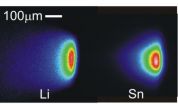(Press-News.org) Neonatal intensive care provides substantial population health benefits in Mexico relative to its costs, even for very premature babies, and as such offers exceptional value for money within the country's Popular Health Insurance (Seguro Popular) program, which offers free access to a specific set of health care interventions. Furthermore, neonatal intensive care could also be cost effective in other middle-income countries. These are the findings of a study by Jochen Profit from Baylor College of Medicine, Houston, USA, Joshua Salomon from the Harvard School of Public Health, Boston, USA, and colleagues, and published in this week's PLoS Medicine.
The authors conducted a detailed data analysis using a decision analytic model—a mathematical model that combines evidence on the outcomes and costs of alternative treatments to help inform decisions about health care policy—to estimate the cost effectiveness of neonatal intensive care in Mexico. The results showed that compared to no intensive care, neonatal intensive care for infants born at 24–26, 27–29, and 30–33 weeks gestation prolonged life expectancy by 28, 43, and 34 years respectively, and averted 9, 15, and 12 DALYs (disability-adjusted life years; one DALY represents the loss of a year of healthy life), at incremental costs of US$1,200, US$650, and US$240 for each DALY averted, respectively.
Interventions with incremental costs per DALY of less than a country's per capita gross domestic product are considered highly cost-effective; incremental costs of 1-3 times the per capita GDP are potentially cost-effective. Since Mexico's per capita GDP was approximately US$8,200, this study suggests that including neonatal intensive care in Mexico's Seguro Popular is highly efficient in terms of the overall benefits it provides compared to the resources it consumes.
The authors say, "Our economic evaluation indicates that neonatal intensive care for preterm infants in Mexico is likely to be exceedingly cost-effective." They add, "While improving the survival of infants above 30 weeks gestation provides the greatest overall population health benefits, and at the highest value for money, intervention among all preterm infants above 24 weeks gestation should be considered as a cost-effective use of health care resources."
INFORMATION:
Funding: This project was supported by funding from the Ministry of Health in Mexico. JP's effort was also supported in part by a grant from the Eunice Kennedy Shriver National Institute of Child Health and Human Development (K23 HD056298-01). The funders had no role in study design, data collection and analysis, decision to publish, or preparation of the manuscript.
Competing Interests: Joshua Salomon is a member of the PLoS Medicine Editorial Board
Citation: Profit J, Lee D, Zupancic JA, Papile L, Gutierrez C, et al. (2010) Clinical Benefits, Costs, and Cost-Effectiveness of Neonatal Intensive Care in Mexico. PLoS
Med 7(12): e1000379. doi:10.1371/journal.pmed.1000379
IN YOUR COVERAGE PLEASE USE THIS URL TO PROVIDE ACCESS TO THE FREELY AVAILABLE PAPER:
http://www.plosmedicine.org/article/info%3Adoi%2F10.1371%2Fjournal.pmed.1000379
PRESS-ONLY PREVIEW OF THE ARTICLE: www.plos.org/press/plme-07-12-salomon.pdf
CONTACT:
Joshua A Salomon
Harvard School of Public Health
Global Health and Population
Boston, MA 02115
United States of America
+1 617 432 4618
jsalomon@hsph.harvard.edu
END
Jeremy Keenan and colleagues report that during a cluster-randomized clinical trial in Ethiopia, nasopharyngeal pneumococcal resistance to macrolides was significantly higher in communities randomized to receive azithromycin compared with untreated control communities.
Funding: The National Institutes of Health (NEI U10 EY016214) was the main supporter of this trial. This project was also supported by the Bernard Osher Foundation, That Man May See, the Harper Inglis Trust, the Bodri Foundation, the South Asia Research Fund, Research to Prevent Blindness, NIH/NCRR/OD UCSF-CTSI ...
Washington, DC — Monkeys moved thought-controlled computer cursors more quickly and accurately when provided with additional sensory feedback, according to a new study in the Dec. 15 issue of The Journal of Neuroscience. While most brain-machine technologies rely only on visual feedback, this study demonstrated that these systems can be improved when users have additional input, such as a sense of the arm's position and motion, a sensation known as proprioception.
With the aid of brain-controlled devices, paralyzed people have been able to send e-mail, ...
Inside a small cabinet the size of a dorm refrigerator in one of Himadri B. Pakrasi's labs, a blue-green soup percolates in thick glass bottles under the cool light of red, blue and green LEDS.
This isn't just any soup, however. It is a soup of champions.
The soup is colored by a strain of blue-green bacteria that bubble off roughly 10 times the hydrogen gas produced by their nearest competitors—in part because of their unique genetic endowment but also in part because of tricks the scientists have played on their metabolism.
Hydrogen gas can be produced by microbes ...
DALLAS – Dec. 14, 2010 – Researchers at UT Southwestern Medical Center have discovered sets of genes active in cancer cells and normal tissue that predict survival time and potential new treatments for patients with non-small cell lung cancer.
"Patient responses to cancer treatment vary widely and often depend on subtle biological differences among tumors," said Dr. David Mangelsdorf, chairman of pharmacology at UT Southwestern and co-lead author of the study, published Dec. 14 by PLoS Medicine.
"These findings are important because the ability to determine which genes ...
If you want to look attractive and healthy, the best thing you can do is get a good night's sleep, finds research in the Christmas issue published on bmj.com today.
For the first time, say the authors, there is scientific backing for the concept of beauty sleep.
The study, led by John Axelsson from the Karolinska Institutet in Sweden, investigated the relationship between sleep and perceptions of attractiveness and health. The authors believe this research is important in today's 24 hour society with the number of people suffering from sleep disorders and disturbed ...
People can be reassured that while alcohol may slow down digestion after a rich calorific meal, enjoyed by many during the Christmas season, it will not cause indigestion symptoms such as heartburn, belching and bloating, finds research in the Christmas issue published on bmj.com today.
In order to determine the effects of alcohol on the digestive system when rich meals are consumed, investigators at the University Hospital of Zurich, led by Dr Mark Fox now at the Queens Medical Centre in Nottingham, studied 20 individuals who either drank wine or black tea with cheese ...
Research in the Christmas issue published on bmj.com today explodes the Danish myth that it is possible to get drunk by submerging your feet in alcohol.
The authors, led by Dr Peter Lommer Kristensen from the Hillerød Hospital in Denmark, say it was important that the myth underwent scientific scrutiny to prevent students wasting their time experimenting with this activity.
Three adult volunteers took part in the study. None of them suffered from any chronic skin or liver disease and they were not addicted to alcohol or psychoactive drugs. The participants were not ...
The skeletons of kings and queens lying in mass graves in the Royal Basilica of Saint-Denis in Paris could finally have the solemn funeral ceremonies they deserve, say experts in the Christmas issue published on bmj.com today.
Many of the graves in the Royal Basilica were destroyed by revolutionaries in 1793 and very few remains of the mummified bodies have been preserved and identified.
Dr Philippe Charlier led the scientific breakthrough that has identified the head of the French King, Henri IV.
A team of scientists from different fields of expertise including ...
Washington, D.C. (December 14, 2010) -- One of the rarest metals on Earth may be an excellent option for enabling future flash memory chips to continue to increase in speed and density, according to a group of researchers in Taiwan.
"Incorporating nanocrystals of iridium into the critical floating gate portion of flash memory designs shows both excellent memory properties as well as stability in the high temperatures used in processing such semiconductor devices," says the research team leader, Wen-Shou Tseng of Taiwan's Center for Measurement Standards, Industrial Technology ...
Washington, D.C. (December 14, 2010) -- The manufacturing of semiconductor wafers used in all types of electronics involves etching small features onto a wafer with lasers, a process that is ultimately limited by the wavelength of the light itself. The semiconductor industry is rapidly approaching this fundamental limit for increasing the speed of the microchip. The development of a new intense 13.5-nm (extreme ultraviolet or EUV) light source will resolve this issue by reducing the feature size by an order of magnitude or so, according to Purdue researchers in the Journal ...


